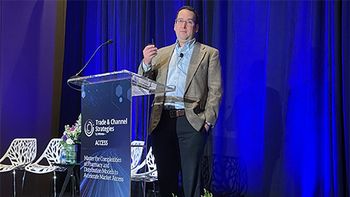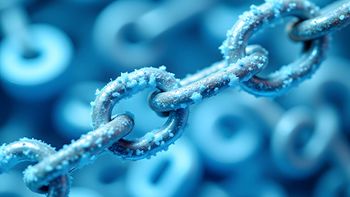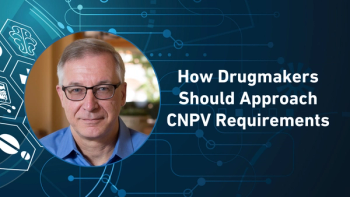
- Pharmaceutical Commerce - October 2022
- Volume 17
- Issue 5
‘Old School,’ New Technology
A conversation with dangerous goods expert Jay Johnson
Jay Johnson, senior manager of Labelmaster Services for Labelmaster, is a long-time expert in packaging and logistics solutions for the chemical and biotech industries, with a focus on dangerous goods (DG) and hazardous materials. He has been an active participant and major resource in the development and implementation of international dangerous goods regulations and is an active member of the Council on Safe Transportation of Hazardous Articles (COSTHA) and the Dangerous Goods Trainers Association (DGTA).
Johnson sat down recently with Pharma Commerce to share his thoughts about recent disruptions and advances in the area of cold chain, and to emphasize that companies need to choose packaging and distribution systems that really fit a checklist of their needs.
Pharma Commerce: With the pandemic and other crises, what key changes have you seen affecting cold chain in the last couple of years?
Jay Johnson: As the global pandemic has exposed logistical problems for lithium batteries and temperature recorders, people are going back to something of an “old school” approach. There had been this desire to have devices that could do everything—track shipments from space, for example—but they take a lot of power to run. And it is annoying to try and figure out whether such devices activate while they’re in the air, which the airlines certainly don’t like from a security standpoint. So, I’ve seen people going back to things like mechanical temperature recorders and chemical monitors, which only tell you when something’s gone out of range. These are inexpensive devices, particularly for last mile, and so are appealing to companies that have been scaling back from a cost standpoint.
Another change is that companies aren’t filling warehouses with Styrofoam coolers anymore. Instead, there are all sorts of things happening with insta-boxes, pop-up liners, fabric bags, cool liners, and products that have reflective metal or recycled material. We’re getting very creative with the new packaging that’s available. Now, we can ask, is all of it good? No. Does all of it work for everything? Hell, no. Companies must map out what they’re doing and select the packaging system that 1), fits their needs; 2), fits their time period; and 3), fits their price point. Now, Styrofoam panels were inexpensive, but it was difficult to sustain the right temperature because of gaps in the panels. And you’ve also got countries that don’t want Styrofoam, as they’re not able to recycle it. But if your system is built so that you can get your molded coolers back, you can run these coolers 10, 20 times. As long as you set up parameters to make sure that they’re not contaminated and you can easily replace the outer box if it gets damaged, the cooler itself could go on not indefinitely, but certainly for a long time, which means major savings.
People always want the less expensive option. They want something that takes up less space and they want something that will work for the duration and at the price point for what they’re doing. But companies should really look at what they’re trying to accomplish. What temperature range do they actually need? Is it 2–8℃? Or could they really go for 0–8℃, which is much easier to maintain? Do they really need seven-day monitoring? Or would they know by the third day if something is wrong and move on? These kinds of questions help them to pick a better price point for what they’re trying to do.
In terms of DG in the cold chain, what else has changed over the last two years?
I think that the way information is being communicated is different. There are still lots of conferences, but there’s not going to be as many as before because people have figured out a way to get their information from other sources. You’ve got people turning more than ever to pay services and websites and trade magazines because they couldn’t get together and hash it out at a conference during the pandemic. And people realized that the world didn’t come to an end when they didn’t go to conferences.
From my standpoint as a trainer and educator in the field of dangerous goods, we used to feel that if you didn’t do a DG class live then you weren’t getting trained. Now, people feel very different about that. But it took a pandemic to open that Pandora’s box. There were countries in Europe, Switzerland for example, that previously didn’t allow online training. They have had to make adjustments. Now I’m getting requests globally for training where they don’t expect me to fly over there; they want me to teach the class virtually and answer questions live. That’s a big difference.
Are you seeing changes in the way life sciences companies are approaching cold chain challenges?
People are asking more questions and pharma companies are getting more pushback from different regions internationally regarding packaging. One region might not want a particular item and so the pharma company has to figure out what alternatives they can use to get them even close to the temperature range they were getting at the price point they had previously. I’m getting a question like, “As opposed to Styrofoam or urethane foam, if I used an open-cell polyethylene foam, or even air bubbles or bubble bags, what kind of temperature can I maintain?” I usually try to push back and tell them really need a thermal lab to make sense of that; you can’t just take a chance on bubble wrap.
Pharmaceutical companies are held to a higher standard; it’s about more than just fines and penalties for regulatory noncompliance. If a company starts to cut corners in storage and shipping, people are going to say, “Are they also cutting corners to make the drug that I’m taking? Are they cutting corners to make the device that I’m using to keep me alive?" A pharma company could be setting itself up for a PR nightmare that it really doesn’t need to have, because complying with regulations is going to be significantly cheaper than the PR ramifications of not doing that.
What balance are you seeing in terms of active and passive temperature control?
I’m seeing more active systems, and I think there’s a lot of opportunity there. Couriers can build refrigeration or heating into certain sections of the vehicle that is shipping the goods. I know they’re stiving to make customers feel more comfortable that refrigeration is maintained throughout the entirety of a shipment, without the use of additional insulation or passive materials. If an item is only being shipped from A to B and the courier can guarantee the temperature range without the need for cold chain packaging, then it might be worth companies paying more to ship it that way because they will save on the packaging.This technology is really moving forward because courier operators like UPS and FedEx want to keep all the stuff within their systems. By having active temperature control, whether it’s elevated or refrigerated, couriers can make the customers more dependent on them for a particular route, so I think we will see more investment in this active technology.
Articles in this issue
about 3 years ago
Pharmaceutical Commerce - October 2022 Issue (PDF)about 3 years ago
Decisive Moves on the Digital Supply Chainabout 3 years ago
Betting the House on Orphan Drugsabout 3 years ago
Cold Chain Tech Continues to Evolveabout 3 years ago
Building a Robust Cold Chain for CGTsabout 3 years ago
Keys to CGT-Supply Chain Integrationabout 3 years ago
Building the Cold Chain of the Futureabout 3 years ago
Choosing the Right Monitoring Deviceabout 3 years ago
Global Logistics: A Cold Chain Blueprintabout 3 years ago
On the (New) Edge of TomorrowNewsletter
Stay ahead in the life sciences industry with Pharmaceutical Commerce, the latest news, trends, and strategies in drug distribution, commercialization, and market access.





